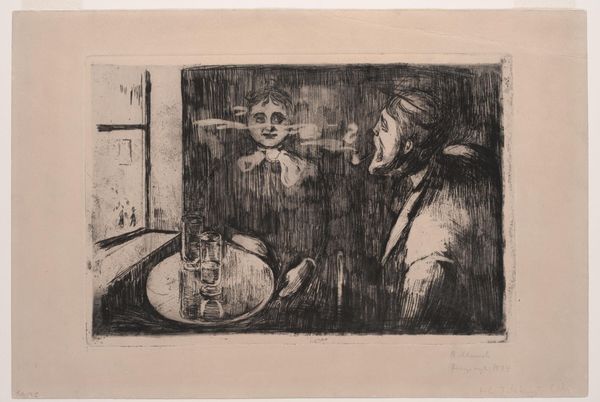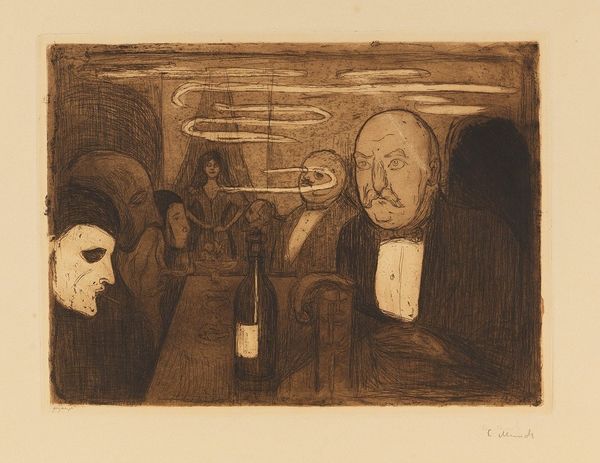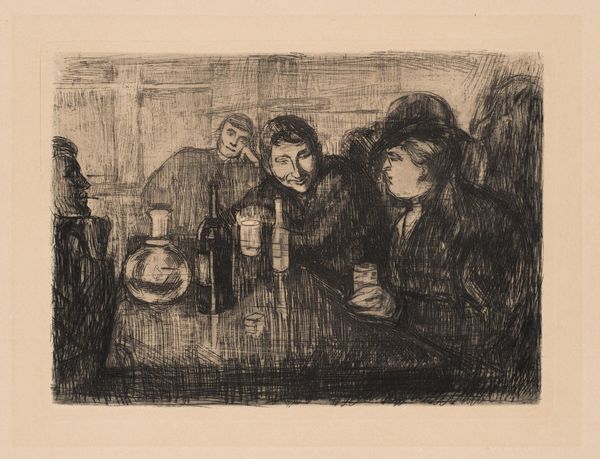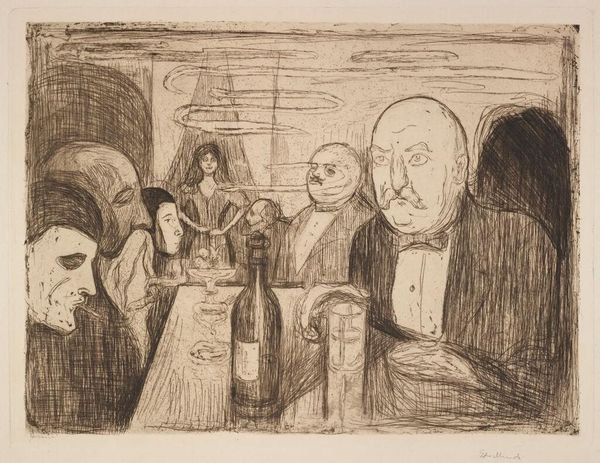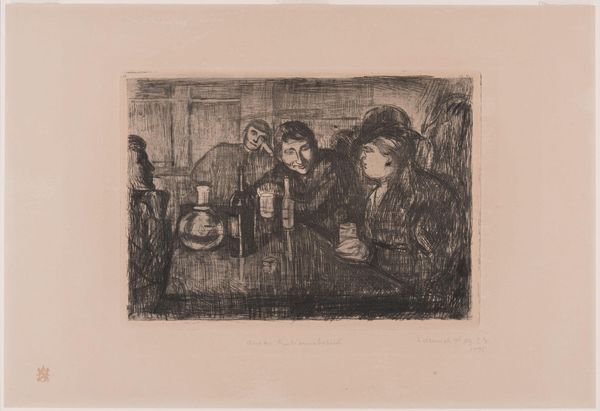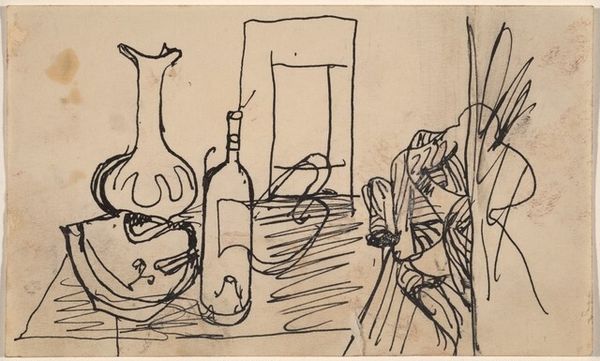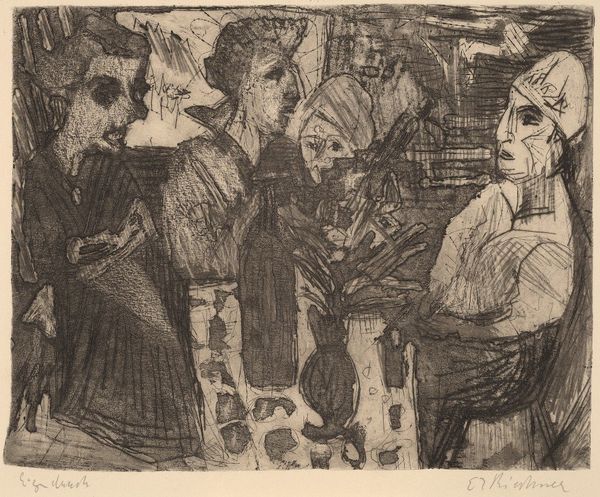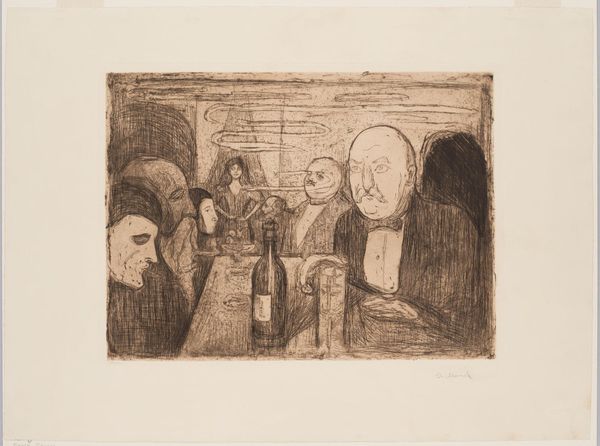
Copyright: Public Domain: Artvee
Editor: We're looking at Edvard Munch's "Tête-à-tête," created in 1984, an etching or print that strikes me with its somber mood. There's a certain weight in the scene, almost like a quiet condemnation of the figures and their shared space. What catches your eye about it? Curator: Considering the context of printmaking at the time, it is relevant to emphasize that etchings allowed for the reproduction of images. It facilitated broader access to art beyond the elite circles who commissioned paintings. Here, we see an intimate moment made reproducible. It compels me to investigate questions of labor: how much time would Munch dedicate to working and reworking the plate? How does that labor translate into the final consumable image? Editor: That's a great point. I hadn't thought about the labor aspect. So you are focused on its implications of image production and availability at the time? Curator: Precisely. Consider the glasses on the tray, likely containing alcohol. Alcohol production, consumption, and social consequences form another critical layer. What kind of commentary might Munch be making about societal indulgences, or dependencies, visible through this printed image, one that itself participates in a network of production and consumption? The blurred figures walking past the window make one wonder about what other socio-economic details Munch aims to point. Editor: It's a darker read than I initially thought, looking at this now as more than an isolated image but part of this network of production and consumption. It's interesting to shift from the feeling to the tangible process. Curator: And isn't that the value of looking at art? Not just to passively receive, but to actively engage with the complex processes and social undercurrents that shape its creation and meaning?
Comments
No comments
Be the first to comment and join the conversation on the ultimate creative platform.

